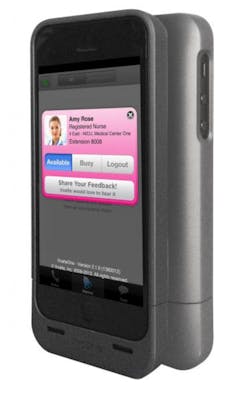Down the road from Lake Winnipesaukee, the largest and most famous of lakes in the serene Lakes Region of New Hampshire, is headquarters of the Laconia, N.H.-based health system, aptly named, Lakes Region General Healthcare (LRGHealthcare).
LRGHealthcare is comprised of Lakes Region General Hospital, a 100-bed acute care facility with numerous specialty departments, a 25-bed critical access hospital in Franklin, N.H., Franklin Regional Hospital, and multiple medical clinics and practices. It is home to one of the busiest emergency departments (ED) in the state, according to the staff. The way Elaine Cartier, LRGHealthcare’s senior director of inpatient services, tells it, the provider pretty much does everything other than neurology and cardiac surgery.
The importance of dialogue between all of these specialties in the hospital, as well the opening of a large, 98 thousand sq. foot expansion to the facility’s intensive care unit (ICU) and senior services unit in December of 2011, became reason enough for LRGHealthcare to seek out an investment in mobile health (mHealth) that would improve communication.
“[When we did this expansion] the size of our rooms increased, the size of our units increased, and we noticed we needed a better way of communicating,” says Stephanie Wheeler, Clinical Coordinator of Clinical Care Services.
The Voalte iPhone credit: Voalte
Texting in the Hospital
With this need articulated, LRGHealthcare turned to Voalte (Sarasota, Fla.). With the help of Voalte’s software and an initial order of 165 iPhones, it has implemented a mHealth communication system which allows different clinicians, pharmacists, case managers, and other staff members to instantly text with each other. Further, the iPhones are equipped with a battery pack, allowing it to be powered on for longer.
Interaction between nurses is one of the vital parts of the system. It allows for nurses to text each other when they are needed, phone to phone or desktop to phone, taking the place of the traditional pager system. In addition, if a patient is in distress, a nurse can relay that pain right in front of the patient to the doctor through the phone. It cuts down the automated answering service.
“We’re really able to call the forces when we need them,” says Cartier.
The phones are strictly for work, says Kevin Irish, CIO of LRGHealthcare. “It’s actually a land-based, wireless dependant communication tool. It’s held secure within the walls. That doesn’t mean, of course, devices can’t walk outside the facility, they just won’t work,” he says.
The provider has seen positive results since the mHealth system was implemented. Thanks to decreased noise levels of overhead paging and an increased promptness of doctor response, patient satisfaction has gone up. More importantly though, the instantaneous communication has improved patient flow in the ED, says Irish.
“We have decreased wait time in our ED by an hour,” says Diana Mayne, director of inpatient services. “The Voalte blast goes out to the admitting bed resource nurse for the day, housekeeping, and the admitting hospitalist, it gives them heads up that a potential admission is coming. We’re able to organize ahead of time so by the time this potential admission comes, we’re ready.”
What’s Next?
Even though the mHealth system has been a rousing success, praised by clinicians and patients alike, there is still an ongoing concern with Health Insurance Portability and Accountability Act (HIPAA), says Irish. He says that people have been trained and educated on the fact that someone could inadvertently send protected health information (PHI) to the wrong individual. The product does, however, allow the user to verify intended party which is supposed to receive it.
“But like any system, you can inadvertently notify the wrong person. There is a bit of vulnerability,” Irish says. “Perhaps, as we go along, those enhancements will be added in.”
HIPAA concerns aside, Irish and other people entrenched in the thickets of this project are looking to expand its scope in the near future. It has been popular among staffers (“I get daily phone calls from people telling me they need one,” says Irish) and easy to adopt.
Along with the likelihood of new phones, those at LRGHealthcare would like to see a separate mHealth system that could integrate with the electronic medical record (EMR). Also, Cartier mentions the possibility of using mHealth to trial electronic discharge instructions from the critical care area, giving them better information on diagnosis, medications, and appointments.
For the leaders at LRGHealthcare, the success of this initiative has come down to a “level of involvement,” says Irish. He says that bringing the right people along when evaluating products, people who can bring potential issues to the forefront, has allowed it to choose the system with the best functionality.
“In effect, at the end of the day, because it is such a departure from some of the traditional technologies in the marketplace and what’s used in hospital, it truly becomes a game changer. I think it has a tremendous amount of influence over the transition in our department to something that’s more mechanical and electronic dependent, but at the same time doesn’t allow us to lose touch with our patients. It doesn’t lessen face time, it enhances it,” Irish says.



